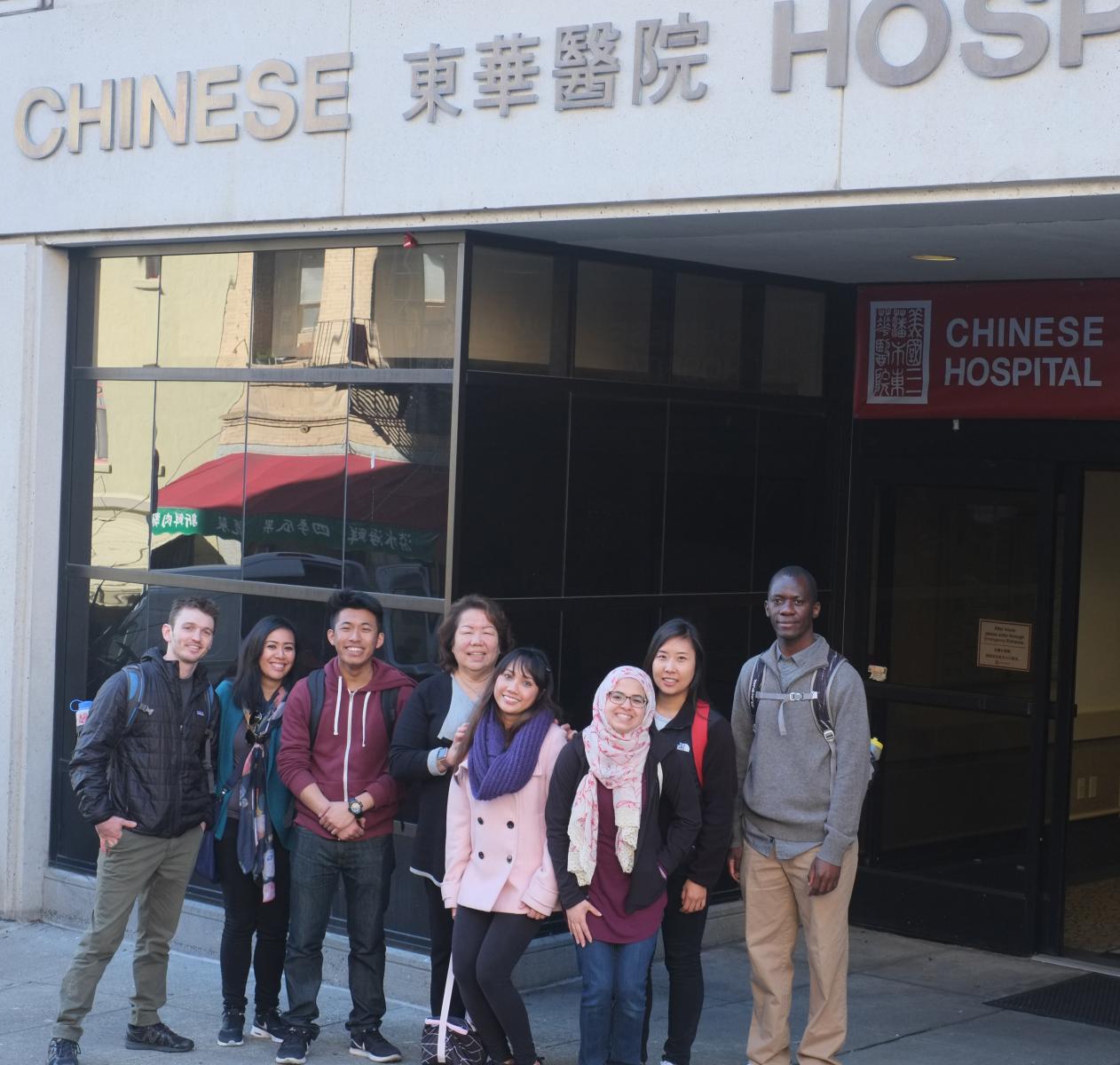Community Health Students Explore Chinese and Japanese American History

[From left to right: Jonathan Alexander, Caralisa Lacson, Peter Tang, Chinese Hospital CEO - Brenda Yee, Reyzel Altre, Besan Zaro, Sarah Hwang, Eddyson Lugangwa]
SF State Nursing Students took a day to explore the history of the Chinatown community that they are serving in their Community/Public Health Nursing Practicum. The students had been learning about the impacts of immigration, discrimination, and other social policies on health, so getting a better idea if the Chinese American experience would enrich their understanding of this community and its residents. The first stop was a visit to the Chinese Historical Society of America Museum and a docent led tour of the critically acclaimed exhibition, “Chinese American: Exclusion/Inclusion.” It chronicles the history of Chinese immigration from the early days of the California gold rush, through the Chinese Exclusion Act (1882-1843), WWII, and beyond.
The students heard how prevalent notions of white supremacy pushed the early Chinese miners out of the gold fields and into other work, including the building of the Transcontinental Railway. After the completion of the railway in 1869 efforts to discriminate against the Chinese intensified, leading up to the first law written to prevent a specific ethnic group from immigrating to the United States (May 6, 1882) and expanded in 1924 to include the rest of Asian countries. After war was declared on Japan in 1941 and China became a U.S. ally, the Chinese Exclusion Act was officially repealed on December 17, 1943. This set up the strange dynamic of pitting Chinese Americans vs Japanese Americans, ‘good immigrant vs bad immigrant’ when some 120,000 Japanese Americans (nearly 2/3rds were U.S. citizens) were incarcerated in ‘relocation camps.’
A walking tour of Chinatown ensued and finished at the front of Chinese Hospital, where the students were greeted by the Hospital’s CEO, Brenda Yee, RN, MSN (SF State Alumna!). Ms. Yee explained that the history of the hospital began in 1899 as an alternative source of healthcare for the Chinese Community, which were forbidden from using the for-whites-only SF General Hospital. After the 1906 earthquake and fire destroyed the original Tung Wah Dispensary, a number of Chinese community organizations formed a Hospital Association, raised money and built the original Chinese Hospital opening in 1925. The students were impressed to see the new, and very modern, Chinese Hospital just opened last year. We appreciate the strong partnership between Chinese Hospital and the SF State School of Nursing.
In the afternoon, the students were treated to a walking tour of Japantown, led by a National Japanese American Historical Society docent. The students learned how the forced relocation of thousands of Japanese American residents obliterated what was at the time one of the largest communities of ethnic Japanese outside of Japan. After the war, and eventual release, few of the former residents were able to return to SF Japantown. Those who were able to return, and struggled to reestablish themselves in their former community, were dealt another blow by SF City Redevelopment plans that expanded Geary Boulevard to its present expressway status. The extensive widening cut through what was left Japantown, claiming many of the properties and further reducing Japantown to the present small area north of Geary. At the end of the day, the students were unanimous in their heightened appreciation for the role of history in the shaping of our present day communities. Caralisa Lacson said, “The day was particularly meaningful for me as an Asian-American, and it was instrumental in developing my understanding of the history that affects communities, and in motivating me to do my part to drive social change that is centered on the principles of equality, inclusivity, and justice.”